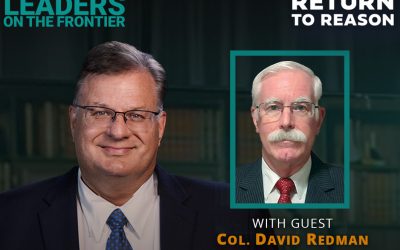When the September 11th terrorist attacks happened, many in this country were astonished at how quickly it took for many Canadians to reveal they secretly believed America had it coming. In fact, it seems anti-Americanism is our civic religion that we can barely conceal any longer. For instance, when it was revealed last election that BC Green Party candidate, Kevin Potvin, had written a column confessing that he cheered as the Twin Towers collapsed, many ran to his defence. Potvin was eventually denied the Green candidacy, but this episode revealed how close to the surface these feelings are. Anti-Americanism has become our last acceptable form of bigotry and xenophobia.
Potvin’s sentiments stemmed from an all-too-familiar view of American foreign policy. The narrative goes that Americans are vicious war mongers who interfere in too many foreign wars and that the attacks were just retribution. The problem is that no one questions if this interpretation is accurate. Of course, most stereotypes contain some grain of truth. Americans have participated in many wars, but so have Canadians and many other nations. Moreover, it is a fact of history that no other country has given so much blood and treasure to assist other countries in their time of need than the United States, especially in the case of the Second World War. This inconvenient truth is left out of the anti-American narrative as it would present a more balanced view of reality.

Restoring reality to our national discourse when it comes to relations with our neighbour to the south is exactly what Rudyard Griffiths achieved in American Myths: What Canadians think they know about the United States. In this excellent collection of 15 essays, Griffiths has assembled a diverse group of writers to each present a particular area of life touching on Canadian-American relations that has been distorted by anti-Americanism. A central strength of the work is how short and concise each essay is and yet, so full of relevant information.
For example, military historian Jack Granatstein handles military and foreign relations, columnist Robert Fulford takes on the arts and cultural nationalism, and Prof. Tom Flanagan looks at the history of how each country has related with its indigenous populations.
As head of the Dominion Institute, a pro-Canadian think tank with a focus on improving Canadian historical literacy, Griffiths assembled a first-rate body of contributors who are not afraid to be fully Canadian and yet not anti-American. This is the book’s greatest contribution: its abiding faith that Canadians can overcome their anti-Americanism and still be proudly Canadian.
Of course, Griffiths has not produced the first work on anti-Americanism in Canadian national life. American Myth is situated within a tradition of mainly conservative literature that evaluates how this tendency prevents rational debate in this country, although Griffiths does well to collect so many different themes within one work, which is not as common.
Books such as Yankee Go Home? Canadians and Anti-Americanism by Jack Granatstein was a major work exploring how misconceptions of America had obscured the debate surrounding the Free Trade Agreement. In that work, Granatstein traced the history of anti-Americanism from a justified historical fear of military invasion to an irrational prejudice today.
In his introduction, Griffiths states the purpose of the anthology as being “nothing less, and nothing more, than the Dominion Institute’s contribution to the project of freeing Canadians from the intellectual straitjacket of anti-Americanism.” However, Griffiths does so much more in this collection. In freeing us from anti-Americanism, he makes a strong positive case for a mature and assertive Canadian identity. Rather than producing a series of rants, which is what could have happened, the authors construct a case for mature co-operation with the United States. One theme uniting most contributors is their understanding that Canadian nationalism does not have to be negative. It can be assertive when it needs to be, but it does not have to always compare itself with America. David Wilkins, the U.S. ambassador to Canada, said it best when he said, “Canada never has to tear down the United States to build itself up.”
In building a mature nationalism, Canadians should not be afraid of adopting traditions from elsewhere, including the United States, if these conventions improve our country. We do not need fear something because it is American. We should take advantage of our relationship:
Perhaps the greatest contribution we make to each other, with our differing philosophies and personalities – and even goals – is to provide a shifting blend of challenge and support, complementing and simultaneously competing with one another. Certainly a truism in sport is that when you play against someone better, your own game tends to improve (page 172).
While Griffith and the authors may believe they are mainly talking about anti-Americanism, they are also talking about Canadian nationalism. Stripped of symbols like the maple leaf and beaver, we have embraced a national identity that is mainly about what it is not (read: American). However, the authors show that this need not be the case, as they demonstrate our myths are not based in empirical reality. As Patrick Luciani shows in his essay on the “American melting pot,” the United States is hardly a community of assimilated ethnic groups. The growth of Latinos and Arab-Americans challenges this. Moreover, Canada is not the multicultural oasis it is made out to be.
The contributors in Griffith’s work set to work demolishing long-held myths. The strength of the authors is in their preference for empirical data in challenging long held assumptions about America. For example, the idea of Canadians as peacekeepers and Americans as war mongers is debunked by looking to the real facts about Canada’s real role in peacekeeping.
Granatstein points to the tremendous over-reliance Canada has had on the United States for its continental defence. But, rather than just highlighting discrepancies, he presents the case that our overwhelming trade reliance on the United States makes it inevitable that we develop a good relationship. He also raises the point that one can support the United States in foreign affairs while still being Canadian. In fact, when our interests align, we should support them. Any mature nation would choose to if their national interests were at stake.
Granatstein’s essay raises the central theme of the book. On many issues, knee-jerk anti-Americanism dangerously distorts our public policy. In foreign policy, it prevented us from seriously considering Ballistic Missile Defence, even though it was in our interest to be involved. In “You want an Americanization of health care,” author David Gratzer evaluates how arguments about creeping “American-style” health care are preventing Canada from even evaluating any private sector innovations in health care. By first showing how much government interference actually exists in the American system, Gratzer demolishes the very idea that American health is a pure free market system. Even more dangerously, he identifies how our politicians, like former Prime Minister Paul Martin, use mythologies about the American health care system to gain political support or relieve them of obligations to fix problems here. The same thing has happened in the environmental debate in Canada. In Neil Reynold’s contribution called, “The Environmental Question,” he identifies this problem of playing the moral high road on environmentalism versus the United States. Reynolds recounts how Paul Martin attempted to chastise the U.S. on the Kyoto Protocol, when in fact empirically Canada had a worse record on greenhouse gas emissions than the United States.
The authors identify how our mythologies about Americans and ourselves substitute for real action. The tendency to just say, “Well, at least we’re not as bad as the Americans,” becomes our reflex when evaluating our own problems. For example, in Tom Flanagan’s piece on indigenous people called “Across the Medicine Line,” he identifies how similar the conditions of indigenous people are on both sides of the border. Even if one historic period on either side had more violence, both experienced dispossession and manipulation. So, empirically we are not better than the Americans; we are almost the same, so our smug moralism is unjustified.
Where this book is particularly persuasive is in its identification of trends in society that need to be addressed, such as the all-too-common practice, particularly within academia, of throwing around words that do not have set meanings. It is intellectual laziness to not define words, such as “decolonization,” but continue to use them because they are popular. For instance, Gratzer tackles “Americanization” of health care, which is misleading, as most European countries have a private element in their health systems. Columnist Andrew Coyne, in “Is America the real North American democracy,” attacks the concept of “American-style” politics. This is never defined. Coyne points out that if anything the United States displays more features of democratic governance than Canada. With a prime minister more powerful than the president and more checks and balances to prevent corruption, including a special prosecutor responsible to Congress, America is eons ahead in terms of transparency. But, Coyne raises a central aspect of the book that many of the differences between the two countries are small. The House of Commons and Congress are both raucous places and both countries use nasty political advertising.
While the authors of this work are correct in warning us against becoming obsessed over the “narcissism of small differences” between us, perhaps they gloss over real differences between our political cultures. Political sociologists, like Seymour Lipset and Gad Horowitz, have demonstrated how history has caused our countries to diverge, particularly in social and political institutions. The United States, as a fragment of purer Lockean liberalism, contrasts with Canada, which is influenced by Tory communitarianism and overt statism. The contributors should not ignore these insights. While there is validity in the contributors’ belief that, “we are really so close to them, so this anti-Americanism does not make sense,” it should be emphasized that even if Americans were very different than Canadians, there is still no excuse for anti-Americanism.
Author Andrew Cohen points to the release of Fire and Ice: The United States, Canada, and the Myth of Converging Values as one example of how Canadians over-dramatize our differences. Cohen is right to point out that there is something wrong in how elites unquestioningly accepted the book’s thesis. They enjoy believing we are different. But, acting as if we are completely the same can be just as bad. For example, the acceptance of religion in public life is a stark difference. During the recent Republican primary debates, candidates were all asked about their beliefs about creationism. Even among the Democrats, mention of religious faith is an important element. This contrasts sharply with Canadian Alliance Leader Stockwell Day who was publicly maligned for holding to six-day creationism. Canadians, like Europeans, have an allergy to religion in public life that borders on the paranoid. Perhaps Griffiths could have included a section on religion, or this oversight might have been deliberate as it may have pointed to more concrete differences.
Despite the emphasis on the ‘narcissism of small differences,” some of the authors actually point to some of these large differences, so in this way the book’s contents contradict one of its aims. Contributors Andrew Coyne and David Frum both point to how much more seriously Americans take freedom, democracy, and the rule of law. Frum reminds us how in the United States evidence obtained by police in violation of freedoms would be automatically excluded, whereas in Canada there is allowance in our Constitution for such evidence to stand. With the emphasis in the United States in electing most positions, as well as the presence of referenda and recall and a preference for defused power, American politics place more emphasis on democracy and individual rights. While these differences should be mentioned, they do not affect the contributors’ central point that this is no excuse for knee-jerk anti-Americanism.
American Myths should be seen as a seminal contribution to literature on anti-Americanism and Canadian nationalism. No anthology will ever be perfect and Griffiths deserves much credit for this project. This small collection does so many things, like demolish myths about our two countries, demonstrates where we are similar, and presents positive scenarios for engagement. Since its founding, Canada has received a steady diet of anti-American propaganda masquerading as intelligent nationalism. We need more editors like Griffiths to set the record straight.
This book review is reprinted from the online ideas journal C2C – see www.c2cjournal.ca


